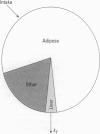Abstract
In this study we investigated estimation of occupational exposure to 2,3,7,8-tetrachlorodibenzo-p-dioxin (TCDD) based on a minimal physiologic toxicokinetic model in humans. Our purpose was to obtain a mathematical tool for dose-response studies based on human data. We first simplified an existing model of TCDD kinetics in humans and estimated its parameters (i.e., liver elimination and background input of TCDD) using repeated measures of serum dioxin taken in Vietnam veterans (Ranch Hand data and data from an unexposed reference group). We carried out computer simulation and estimation of the model parameters both under a nonlinear weighted least-squares model (naive pooled data approach) and under a nonlinear mixed-effects model. The best parameter estimates were obtained with log-transformed data under a mixed-effects model: liver elimination parameter kf = 0.022 days-1 (95% confidence interval [CI] = 0.020, 0.024), and background input rate input = 0.1251 pg/kg/day (95% CI = 0.071, 0.179). The dioxin kinetic model and its estimated parameters were then used to provide dose estimates for a cohort of workers with exposure to TCDD at chemical plants in the United States. First, the model was used to estimate the rate of occupational intake of TCDD in a subset of the cohort consisting of 253 subjects for whom one measure of serum TCDD was available. A model of change in body-mass index over time was also identified for this subsample. The occupational exposure rate was estimated by linear regression using the above values of kinetic parameters and assuming an initial condition for serum TCDD of 7 ppt, i.e., the average level found in unexposed workers. The estimate of the occupational exposure parameter was 232.7 pg/kg/day (95% CI 192, 273). This value can be applied to the full cohort to obtain for each cohort member the time course of serum dioxin concentration from which exposure indices can be derived. Sensitivity coefficients to model parameters (background input, kf, occupational exposure, and the assumed TCDD concentration at hire) allow for a convenient recalculation of the serum TCDD curve and of the derived exposure indices for different assumed values of the model parameters.
Full text
PDF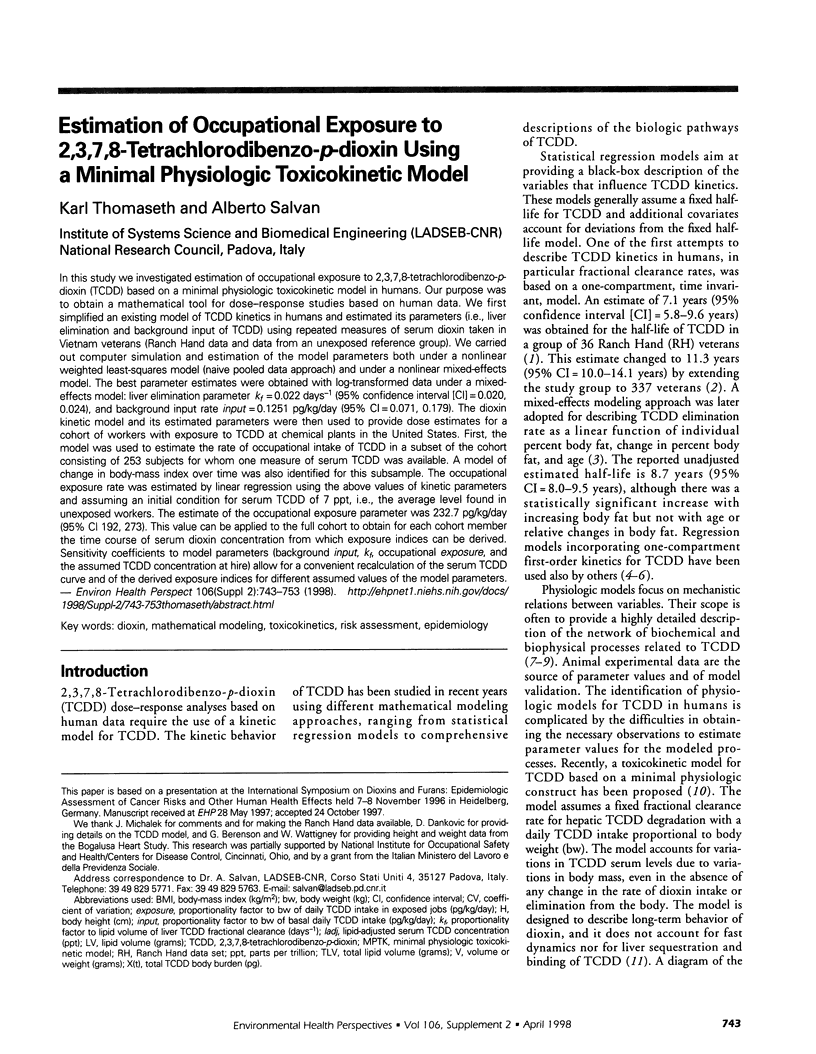
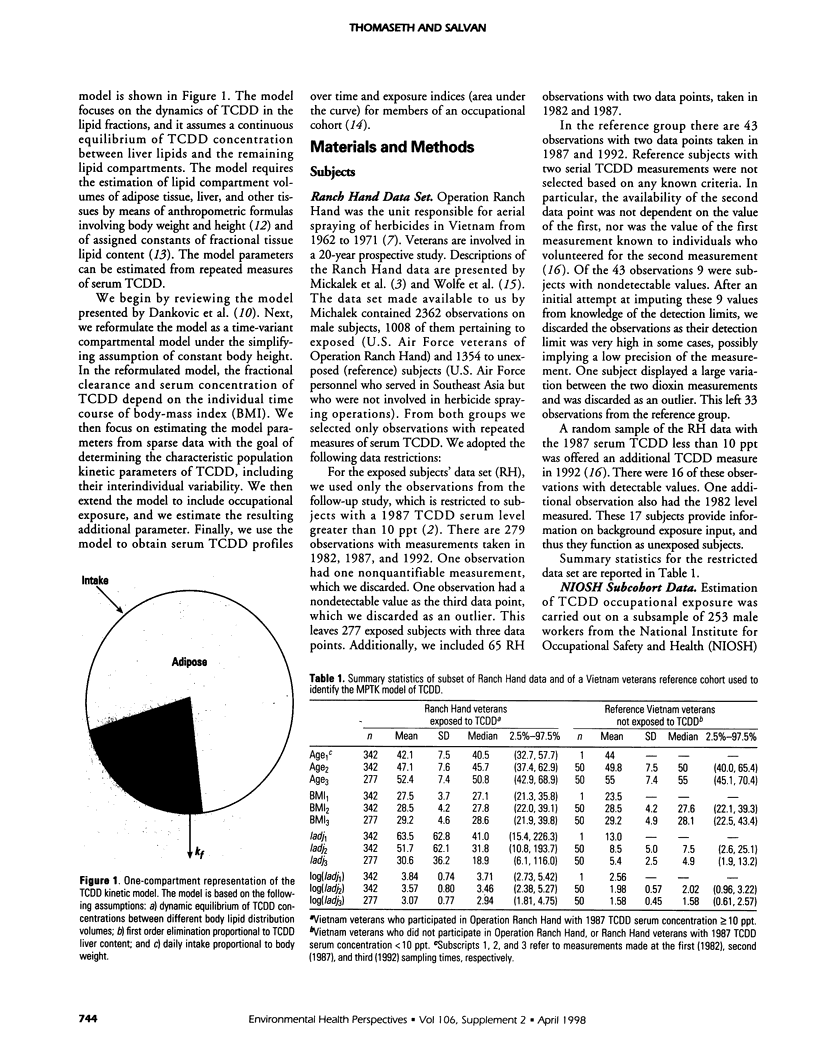
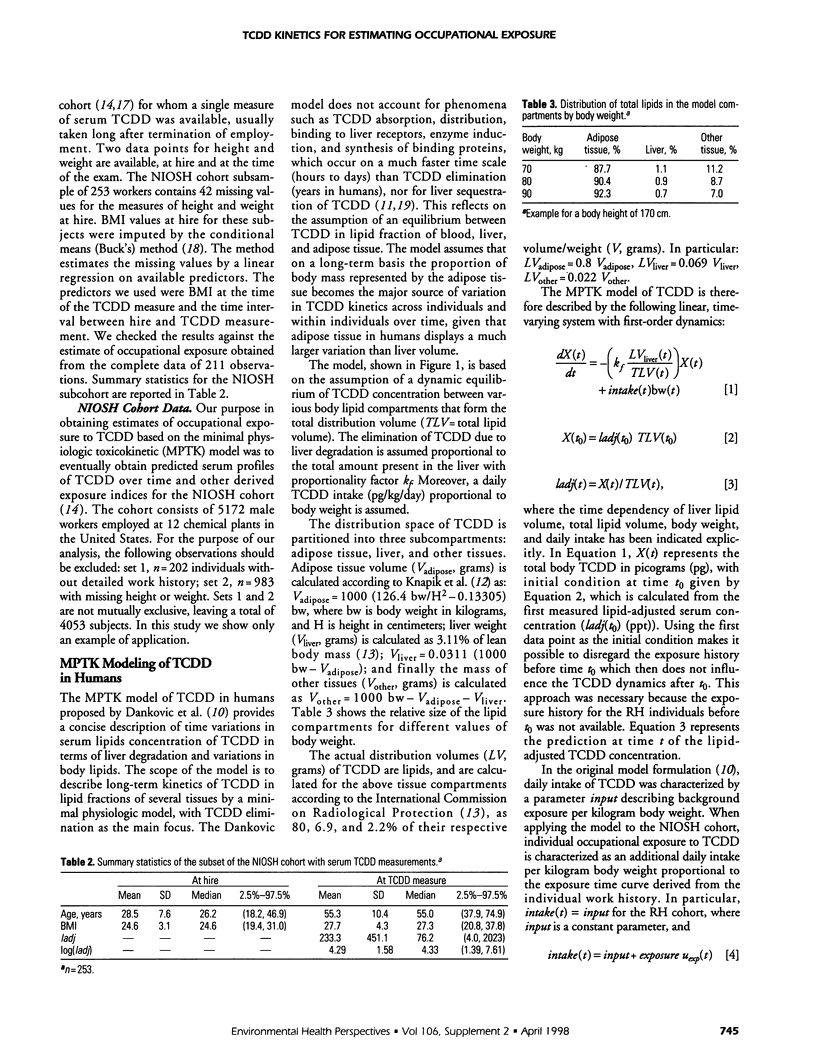
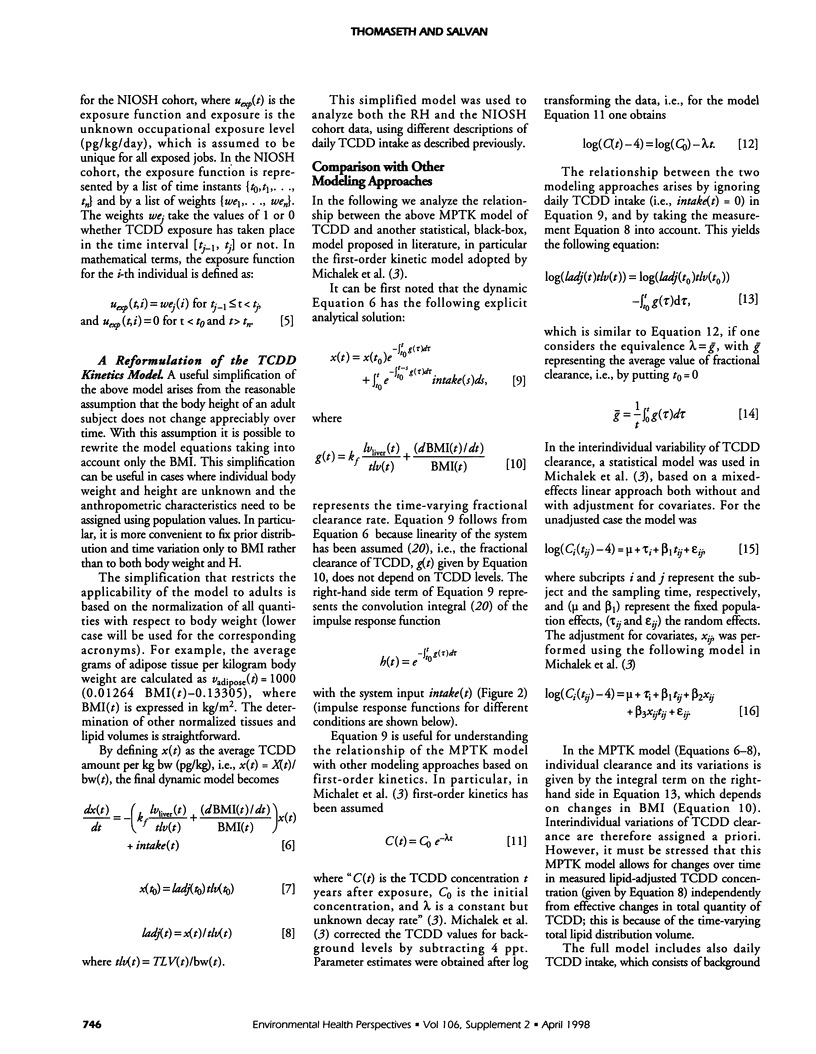
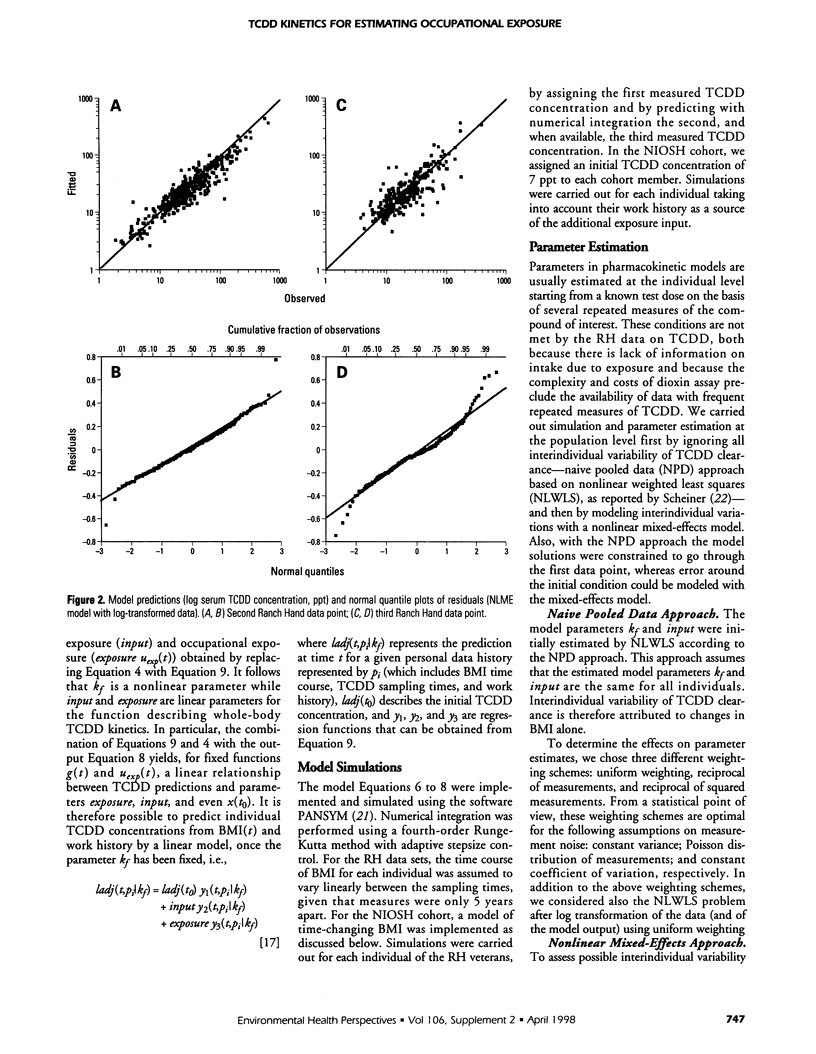
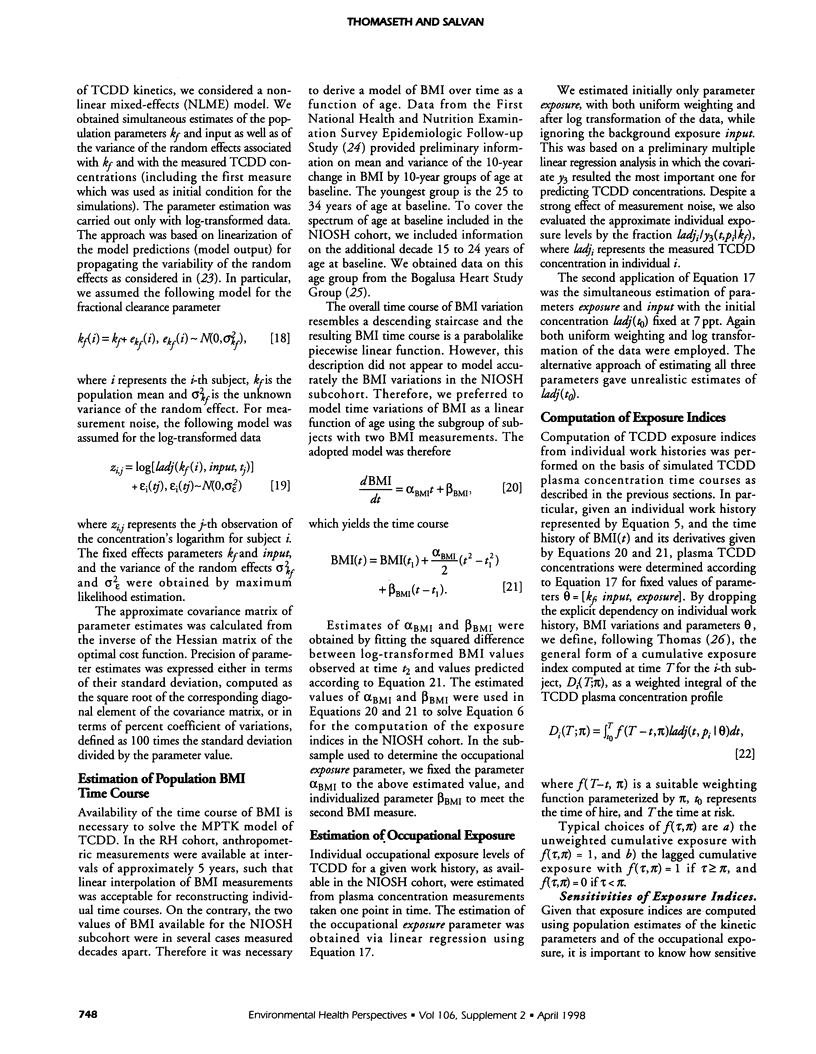
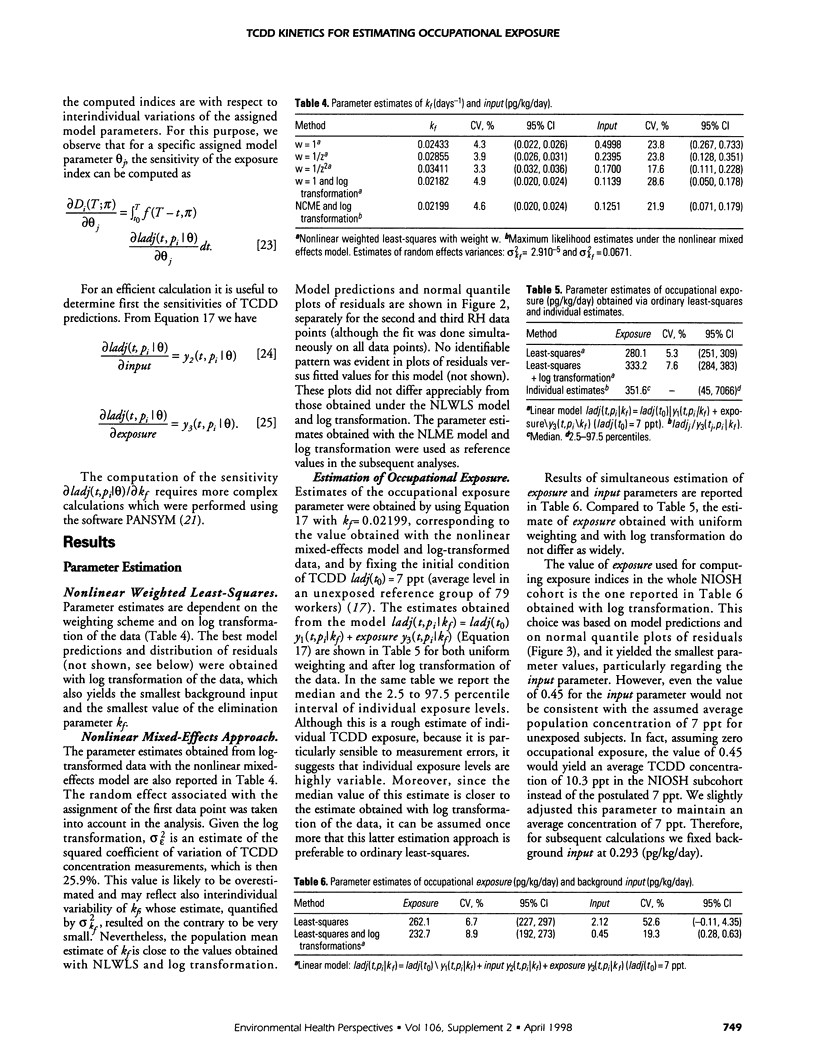
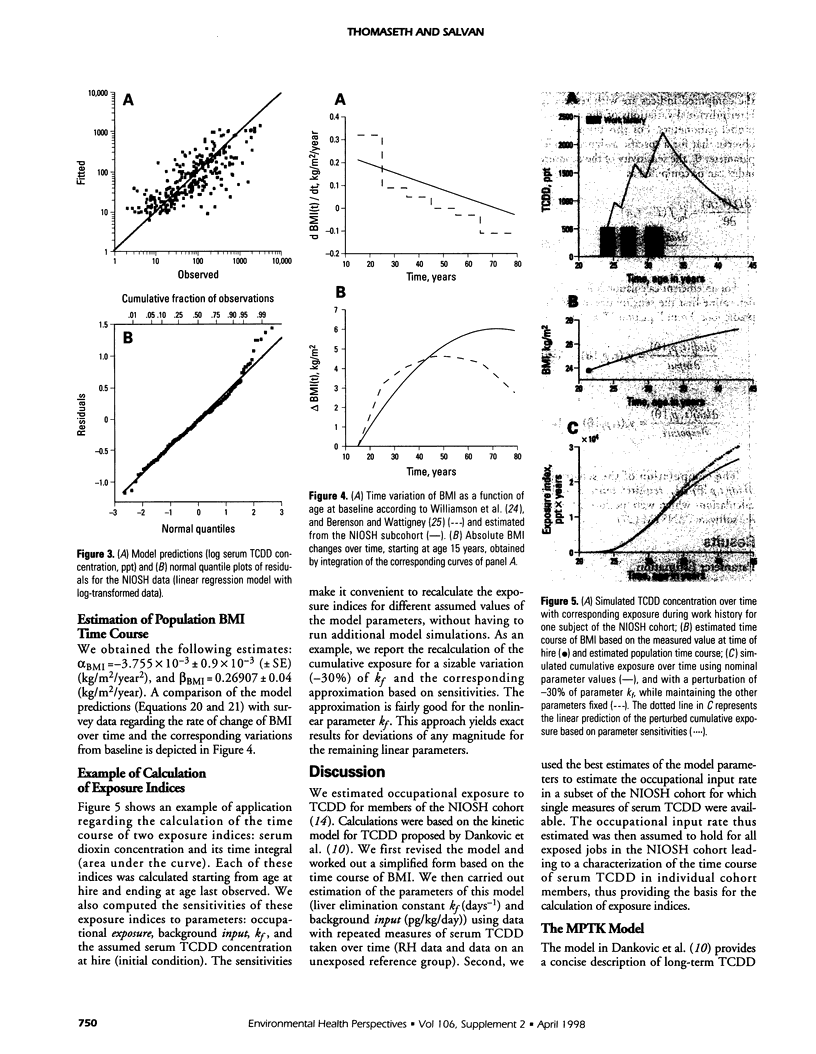
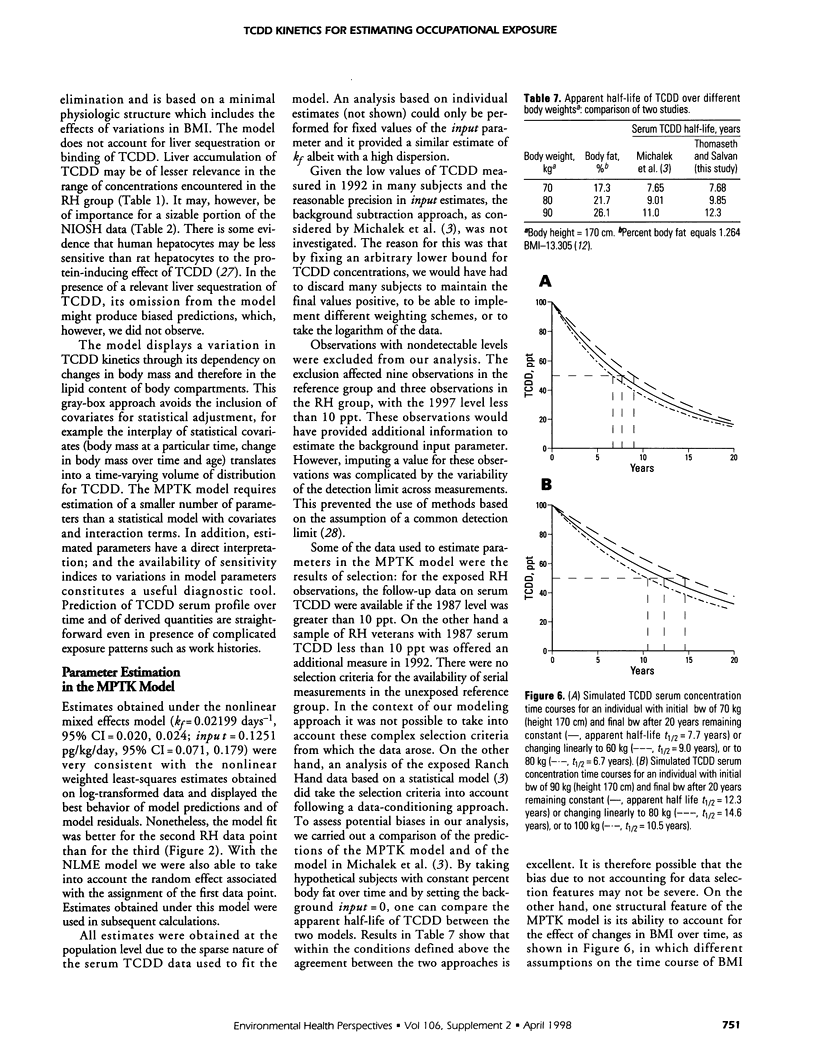
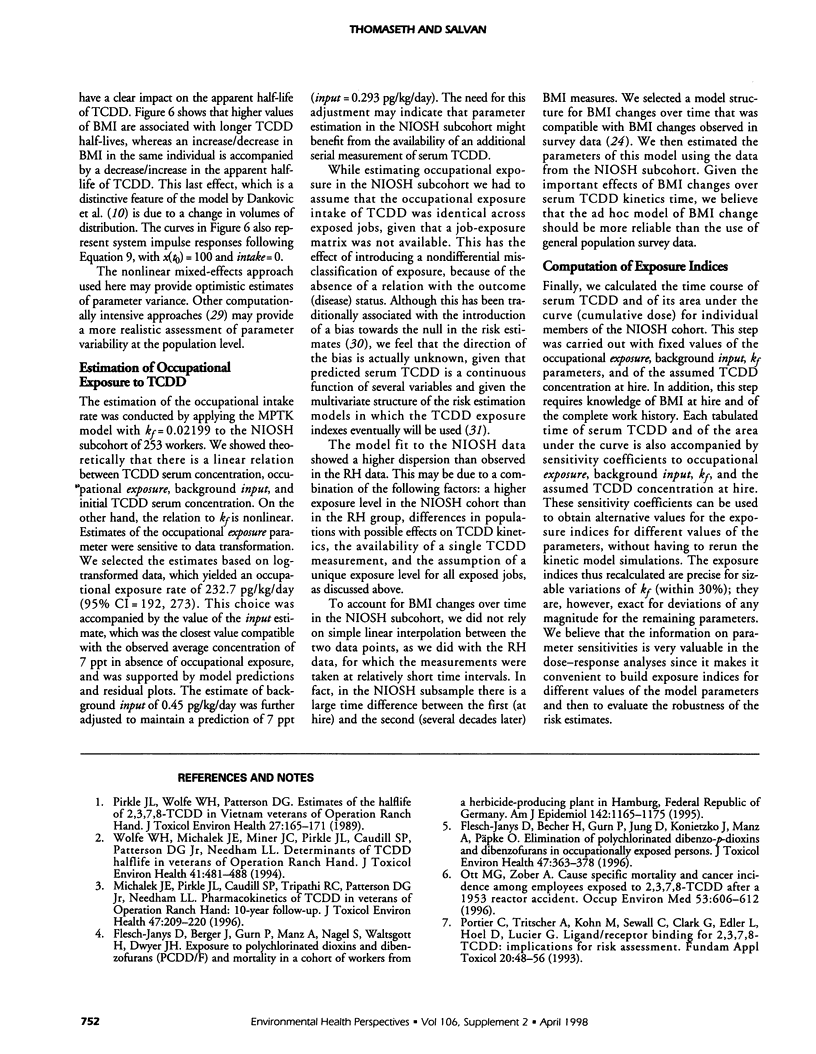
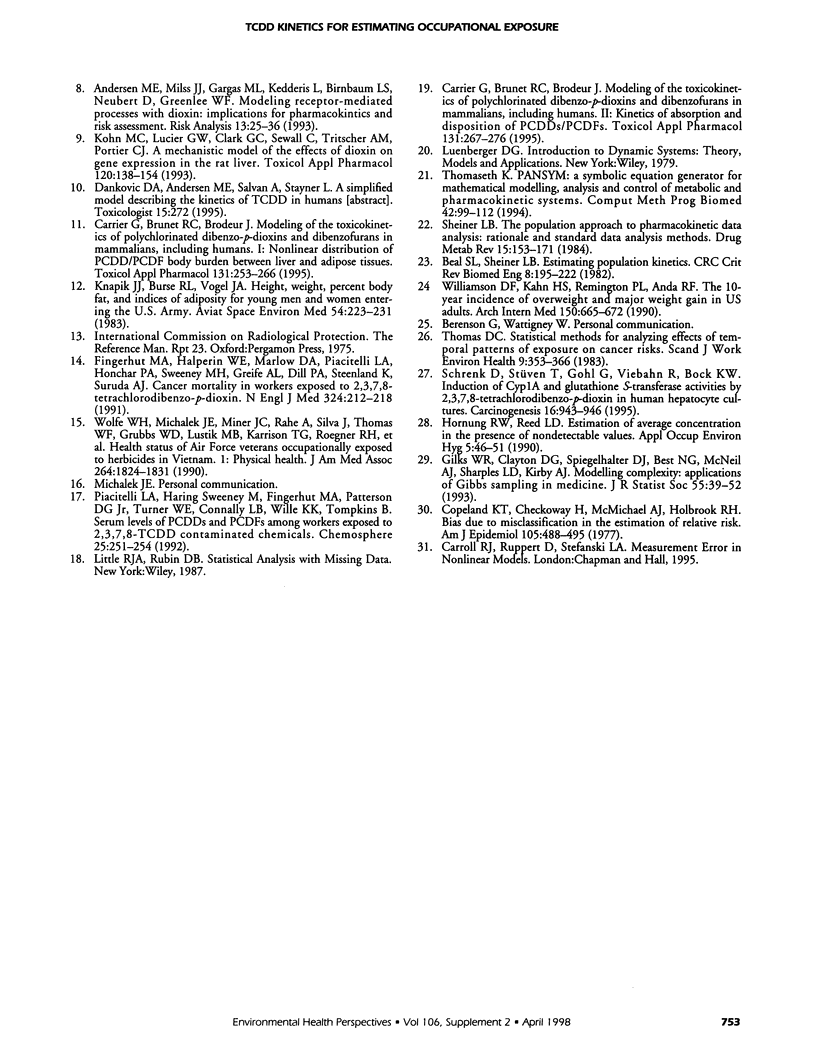
Images in this article
Selected References
These references are in PubMed. This may not be the complete list of references from this article.
- Andersen M. E., Mills J. J., Gargas M. L., Kedderis L., Birnbaum L. S., Neubert D., Greenlee W. F. Modeling receptor-mediated processes with dioxin: implications for pharmacokinetics and risk assessment. Risk Anal. 1993 Feb;13(1):25–36. doi: 10.1111/j.1539-6924.1993.tb00726.x. [DOI] [PubMed] [Google Scholar]
- Beal S. L., Sheiner L. B. Estimating population kinetics. Crit Rev Biomed Eng. 1982;8(3):195–222. [PubMed] [Google Scholar]
- Carrier G., Brunet R. C., Brodeur J. Modeling of the toxicokinetics of polychlorinated dibenzo-p-dioxins and dibenzofurans in mammalians, including humans. I. Nonlinear distribution of PCDD/PCDF body burden between liver and adipose tissues. Toxicol Appl Pharmacol. 1995 Apr;131(2):253–266. doi: 10.1006/taap.1995.1068. [DOI] [PubMed] [Google Scholar]
- Carrier G., Brunet R. C., Brodeur J. Modeling of the toxicokinetics of polychlorinated dibenzo-p-dioxins and dibenzofurans in mammalians, including humans. II. Kinetics of absorption and disposition of PCDDs/PCDFs. Toxicol Appl Pharmacol. 1995 Apr;131(2):267–276. doi: 10.1006/taap.1995.1069. [DOI] [PubMed] [Google Scholar]
- Copeland K. T., Checkoway H., McMichael A. J., Holbrook R. H. Bias due to misclassification in the estimation of relative risk. Am J Epidemiol. 1977 May;105(5):488–495. doi: 10.1093/oxfordjournals.aje.a112408. [DOI] [PubMed] [Google Scholar]
- Fingerhut M. A., Halperin W. E., Marlow D. A., Piacitelli L. A., Honchar P. A., Sweeney M. H., Greife A. L., Dill P. A., Steenland K., Suruda A. J. Cancer mortality in workers exposed to 2,3,7,8-tetrachlorodibenzo-p-dioxin. N Engl J Med. 1991 Jan 24;324(4):212–218. doi: 10.1056/NEJM199101243240402. [DOI] [PubMed] [Google Scholar]
- Flesch-Janys D., Becher H., Gurn P., Jung D., Konietzko J., Manz A., Päpke O. Elimination of polychlorinated dibenzo-p-dioxins and dibenzofurans in occupationally exposed persons. J Toxicol Environ Health. 1996 Mar;47(4):363–378. doi: 10.1080/009841096161708. [DOI] [PubMed] [Google Scholar]
- Flesch-Janys D., Berger J., Gurn P., Manz A., Nagel S., Waltsgott H., Dwyer J. H. Exposure to polychlorinated dioxins and furans (PCDD/F) and mortality in a cohort of workers from a herbicide-producing plant in Hamburg, Federal Republic of Germany. Am J Epidemiol. 1995 Dec 1;142(11):1165–1175. doi: 10.1093/oxfordjournals.aje.a117575. [DOI] [PubMed] [Google Scholar]
- Knapik J. J., Burse R. L., Vogel J. A. Height, weight, percent body fat, and indices of adiposity for young men and women entering the U.S. Army. Aviat Space Environ Med. 1983 Mar;54(3):223–231. [PubMed] [Google Scholar]
- Kohn M. C., Lucier G. W., Clark G. C., Sewall C., Tritscher A. M., Portier C. J. A mechanistic model of effects of dioxin on gene expression in the rat liver. Toxicol Appl Pharmacol. 1993 May;120(1):138–154. doi: 10.1006/taap.1993.1096. [DOI] [PubMed] [Google Scholar]
- Michalek J. E., Pirkle J. L., Caudill S. P., Tripathi R. C., Patterson D. G., Jr, Needham L. L. Pharmacokinetics of TCDD in veterans of Operation Ranch Hand: 10-year follow-up. J Toxicol Environ Health. 1996 Feb 23;47(3):209–220. doi: 10.1080/009841096161744. [DOI] [PubMed] [Google Scholar]
- Ott M. G., Zober A. Cause specific mortality and cancer incidence among employees exposed to 2,3,7,8-TCDD after a 1953 reactor accident. Occup Environ Med. 1996 Sep;53(9):606–612. doi: 10.1136/oem.53.9.606. [DOI] [PMC free article] [PubMed] [Google Scholar]
- Pirkle J. L., Wolfe W. H., Patterson D. G., Needham L. L., Michalek J. E., Miner J. C., Peterson M. R., Phillips D. L. Estimates of the half-life of 2,3,7,8-tetrachlorodibenzo-p-dioxin in Vietnam Veterans of Operation Ranch Hand. J Toxicol Environ Health. 1989;27(2):165–171. doi: 10.1080/15287398909531288. [DOI] [PubMed] [Google Scholar]
- Portier C., Tritscher A., Kohn M., Sewall C., Clark G., Edler L., Hoel D., Lucier G. Ligand/receptor binding for 2,3,7,8-TCDD: implications for risk assessment. Fundam Appl Toxicol. 1993 Jan;20(1):48–56. doi: 10.1006/faat.1993.1006. [DOI] [PubMed] [Google Scholar]
- Schrenk D., Stüven T., Gohl G., Viebahn R., Bock K. W. Induction of CYP1A and glutathione S-transferase activities by 2,3,7,8-tetrachlorodibenzo-p-dioxin in human hepatocyte cultures. Carcinogenesis. 1995 Apr;16(4):943–946. doi: 10.1093/carcin/16.4.943. [DOI] [PubMed] [Google Scholar]
- Sheiner L. B. The population approach to pharmacokinetic data analysis: rationale and standard data analysis methods. Drug Metab Rev. 1984;15(1-2):153–171. doi: 10.3109/03602538409015063. [DOI] [PubMed] [Google Scholar]
- Thomas D. C. Statistical methods for analyzing effects of temporal patterns of exposure on cancer risks. Scand J Work Environ Health. 1983 Aug;9(4):353–366. doi: 10.5271/sjweh.2401. [DOI] [PubMed] [Google Scholar]
- Thomaseth K. PANSYM: a symbolic equation generator for mathematical modelling, analysis and control of metabolic and pharmacokinetic systems. Comput Methods Programs Biomed. 1994 Feb 14;42(2):99–112. doi: 10.1016/0169-2607(94)90046-9. [DOI] [PubMed] [Google Scholar]
- Williamson D. F., Kahn H. S., Remington P. L., Anda R. F. The 10-year incidence of overweight and major weight gain in US adults. Arch Intern Med. 1990 Mar;150(3):665–672. [PubMed] [Google Scholar]
- Wolfe W. H., Michalek J. E., Miner J. C., Pirkle J. L., Caudill S. P., Patterson D. G., Jr, Needham L. L. Determinants of TCDD half-life in veterans of operation ranch hand. J Toxicol Environ Health. 1994 Apr;41(4):481–488. doi: 10.1080/15287399409531858. [DOI] [PubMed] [Google Scholar]
- Wolfe W. H., Michalek J. E., Miner J. C., Rahe A., Silva J., Thomas W. F., Grubbs W. D., Lustik M. B., Karrison T. G., Roegner R. H. Health status of Air Force veterans occupationally exposed to herbicides in Vietnam. I. Physical health. JAMA. 1990 Oct 10;264(14):1824–1831. [PubMed] [Google Scholar]



